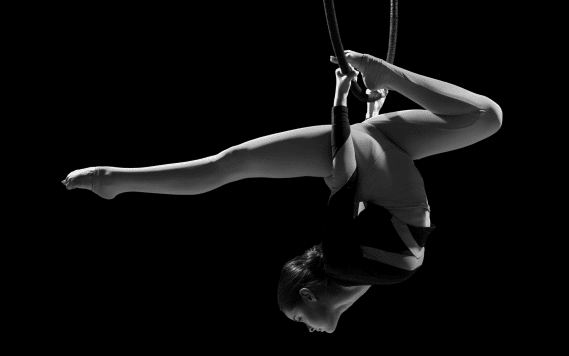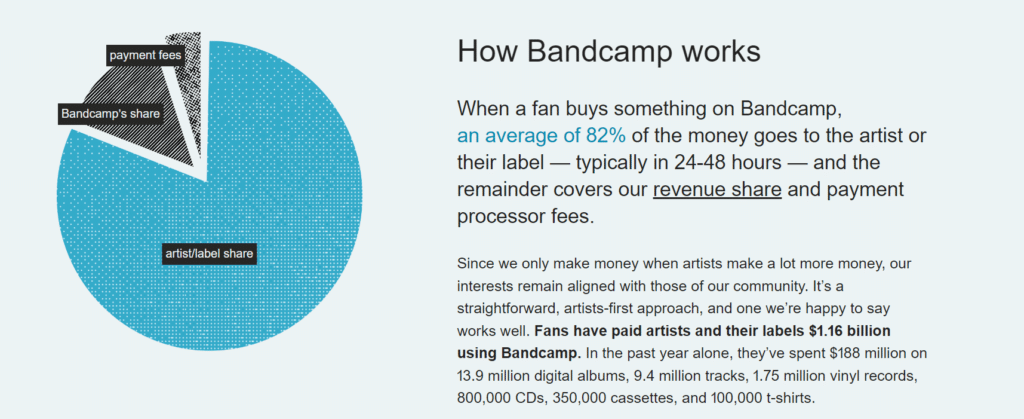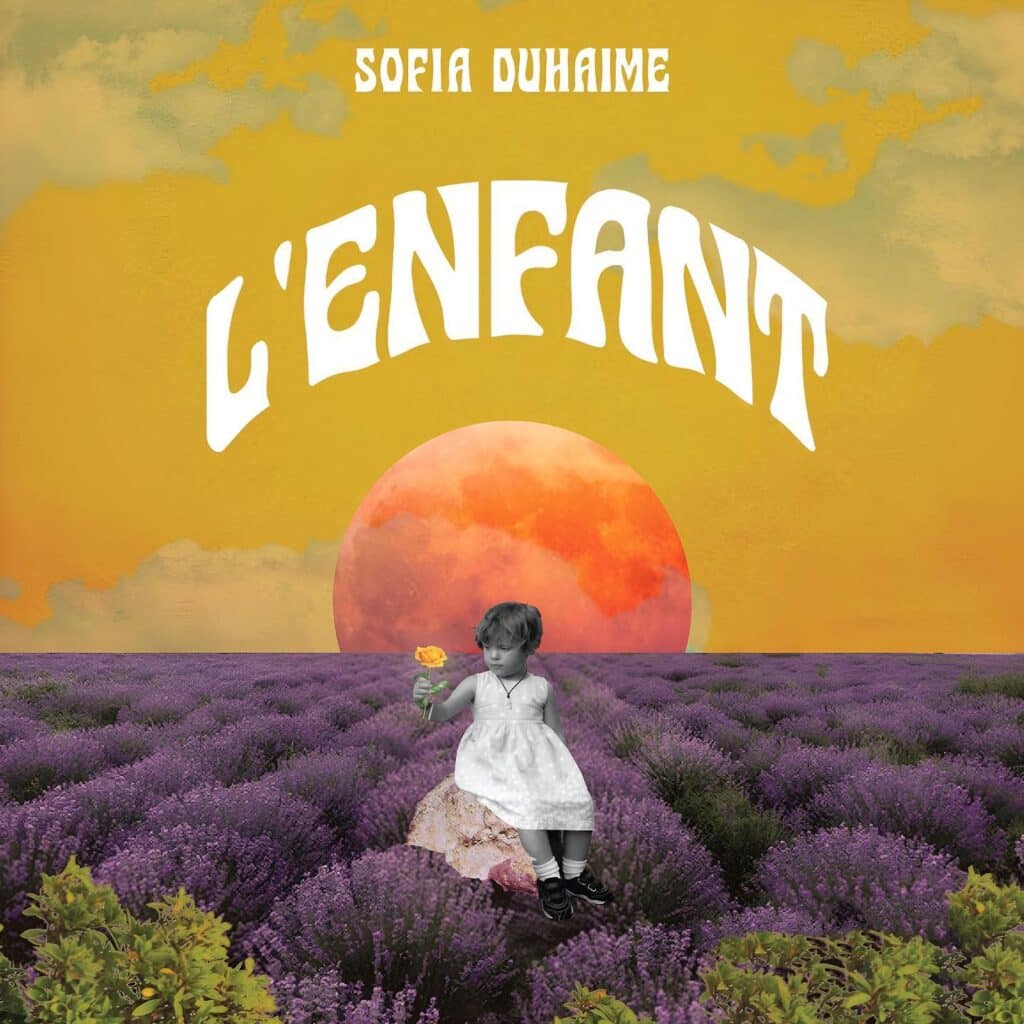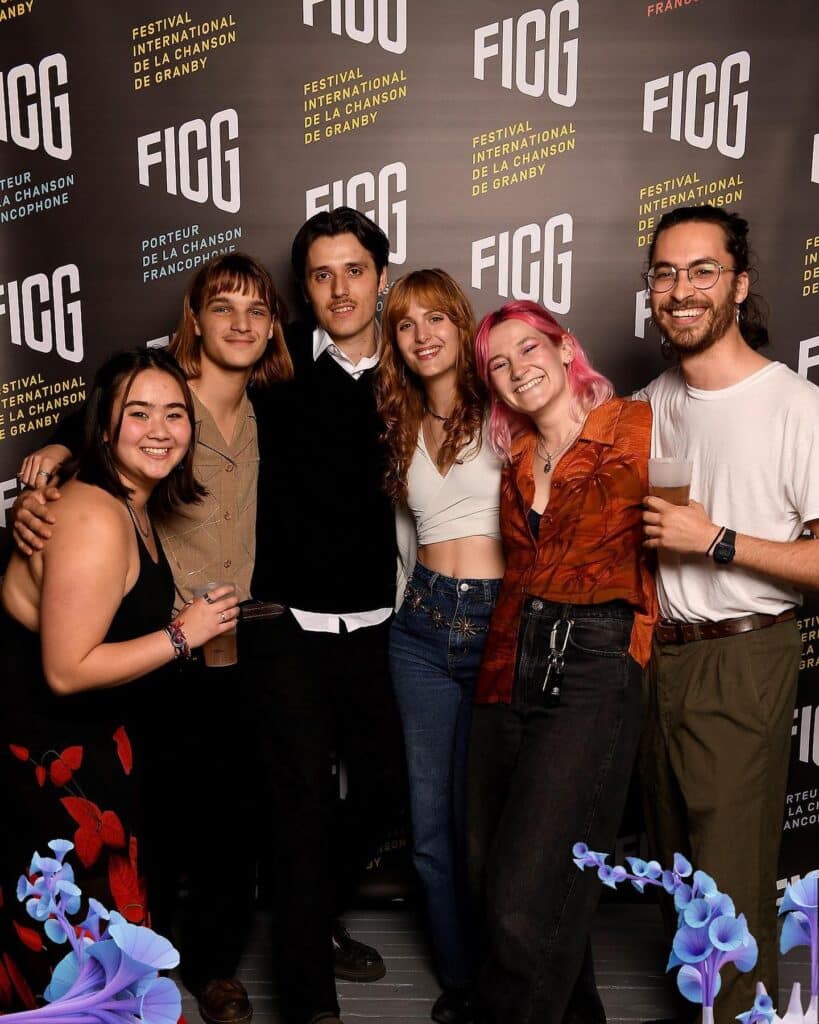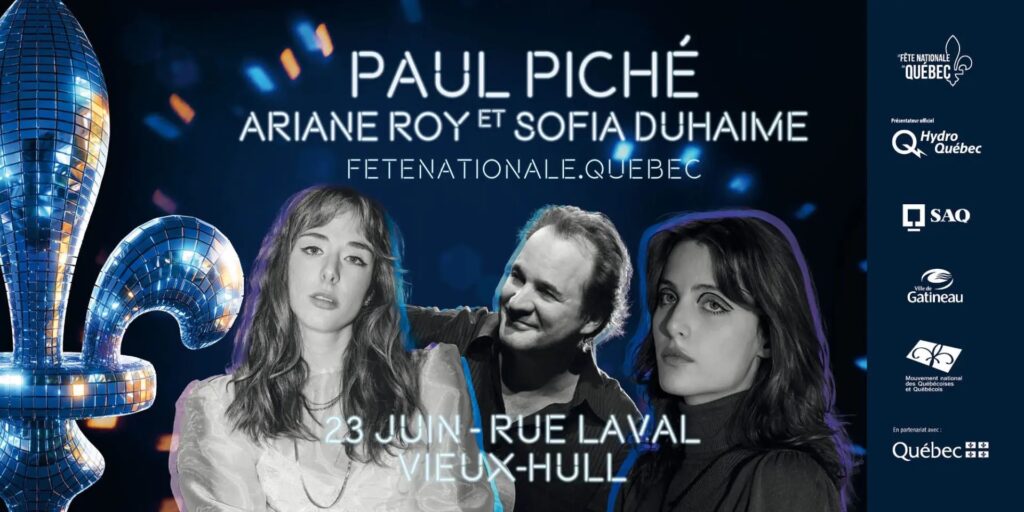There’s no shortage of leisure activities in the Outaouais, but the focus is often on sport and outdoor activities. However, the arts and culture play an important and crucial role in the fulfilment of a population, and our children are also important vectors! So, in addition to summer camps that offer a programme of sporting and recreational activities, we present to you a few summer camp options in the Outaouais region, for young and old, with an artistic flair.
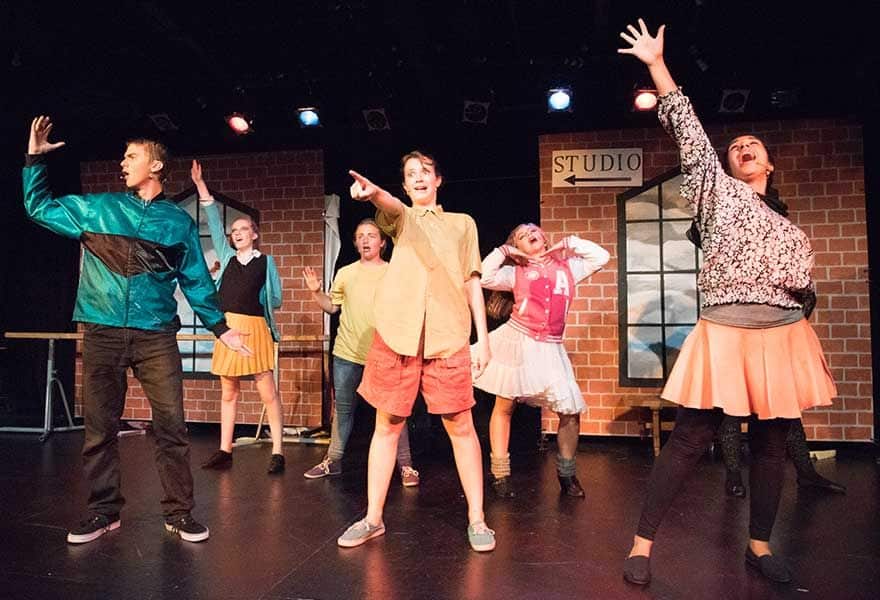
For over 20 years, many budding actors and musicians have taken part in the summer camps offered by L’Artishow. Whether they’re on the road to stardom or purely driven by their love of the stage, your younglings will be blossoming after their two-week immersion in the performing arts. Supervised by professionals in the field, participants will finish their two weeks with a final show that will show you why L’Artishow’s summer camp has become a must in the field of musical theatre.
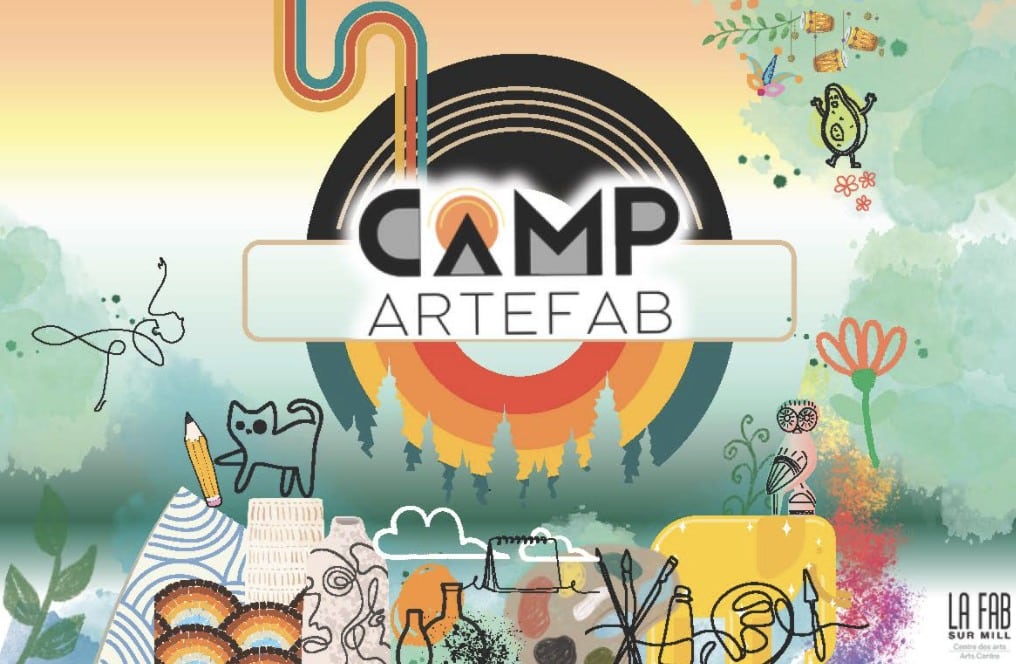
The La Fab sur Mill cultural centre is a veritable hub for the arts in the MRC des Collines-de-l’Outaouais. With a performance hall, an art gallery, and artists’ studios, La Fab is packed with cultural and artistic activities. New this year: the ArteFab summer camp! Every week, La Fab offers a range of artistic themes and practices, from photography and ceramics, from comics to puppetry, and so much more! They also offer camps for all age groups, from children to teenagers.
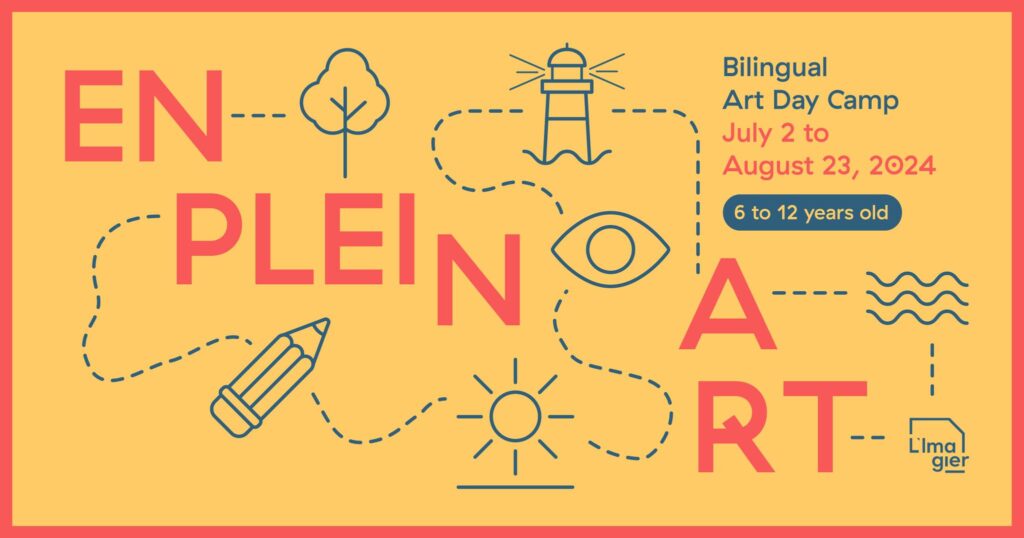
Located in Old Aylmer next to the marina, the Centre d’exposition L’Imagier is a wonderful place to discover the work of visual artists from here and abroad. Their bilingual arts day camp has quickly become one of the most popular in the Outaouais for 6- to 12-year-olds, so don’t delay if you want to sign up your kids. Each week ends with a creative art project, incorporating a variety of mediums, including collage, papier-mâché, plaster casting, drawing and natural photographic printing.
These are just some of the cultural and artistic camps in the Outaouais. Discover a selection of other camps by clicking on the links below:
The arrival of streaming completely changed the music industry in an instant. While many of these platforms, which include Spotify, Apple Music and YouTube Music, may have introduced a new era of musical discoverability and an ease of listening for the consumer, the changes to the industry have mostly been negative for a large swath of artists. For every artist hitting the top of the charts thanks to streaming, hundreds are receiving literal pennies for their musical outputs. Many music executives and label heads have managed to profit handsomely from these new technologies, but that has not been the case for the vast majority of artists creating the music found on these platforms.
“Growing imbalance between the substantial amount of remuneration received by streaming platforms, major labels, and distributors, and the revenues distributed to independent creators and labels has become increasingly apparent, exacerbating concerns from artists and creators about the possibility of building a sustainable career based on earnings from streaming.”
– UNESCO study entitled Revenue distribution and transformation in the music streaming value chain.
Many of the issues plaguing the streaming industry are hurting artists, yes, but the streaming services themselves aren’t shielded either. While their userbase is often increasing, the same can’t be said for their profits. According to a recent article by Engadget, Spotify “grew its subscriber base by 17 percent year over year” but also “posted an adjusted operating loss of $123.7 million” over that same period. Which begs the question: is the streaming industry but an increasingly precarious house of cards?
Here at Tout culture, we believe that artists are the core of the creative industry, not an accessory to it. We’re not here to shame anybody’s usage of streaming platforms, but we’re hoping people can use them in an informed and healthy way. Which is why we’ve decided to launch our new series that explores one online music initiative that’s attempting to pay artists their fair share: Bandcamp Fridays.
What’s Bandcamp?
Founded in 2007, Bandcamp lets artists and music labels decide what they feel is a just price for their music. Both an online record store and a music discovery platform, Bandcamp remains the strongest way to virtually support musicians. It offers more flexibility to artists and labels in deciding how they want their music to be presented and their pricing strategy. As a music lover you can decide to purchase their music physically, through CD and vinyl sales, or digitally via streaming and via downloads in high quality formats including MP3 and FLAC. You can also support your favourite artists by purchasing merchandise or gifting albums to friends.
In 2022 the platform was sold to video gaming company Epic Games, known for the insanely popular online game Fortnite. What this means for the formerly independent platform is yet to be seen, but for the time being their ethos seems to have remained the same. We’re not asking you to delete your other streaming accounts, but if you haven’t yet, we encourage you to try an alternative that gives music lovers the ability to actually own their music, like we did up until recently.
Discoverability vs. Discovery
Playlists on services like Spotify and Apple Music are an extremely powerful discoverability tool for new artists. But making your way onto said playlists isn’t always easy, especially for independent artists. Also, this feature is becoming increasingly reserved to artists and labels who are willing to cut into their streaming royalties to be included in popular playlists. Bandcamp is powered by true music lovers and their online magazine Bandcamp Daily is a testament to this fact. It’s chock full of music recommendations and longform articles, written by professional music journalists, often about artists that rarely get mainstream media coverage. While the discoverability factor might not be as high as other platforms, the discovery aspect of Bandcamp goes above and beyond what their competitors are doing.
Bandcamp Fridays to counter the effects of the pandemic
When the first lockdowns started at the beginning of the pandemic, artists suddenly found themselves unable to perform live or to go on tour, their main revenue source. Bandcamp launched their Bandcamp Fridays initiative as a direct response to this new reality. Every first Friday of the month, Bandcamp committed to waiving their revenue share of all sales on that day. To date, over $100 million USD have been paid to artists and labels, many of which are independent. To find out the date of the next Bandcamp Friday, all you need to do is visit isitbandcampfriday.com to get your answer.
Each month we’ll present local artists whose music you can find on Bandcamp to help you get in tune with the local music scene as well as stimulate the local economy. Do you know an artist we should feature? Let us know! We’re always looking to discover new talent. Meanwhile, head over to Bandcamp and see if your favourite artists are using the platform, give them a follow, and maybe even buy an album.
We can feel a breath of fresh air, a sustained momentum, supporting the visual arts ecosystem in the Outaouais and Benjamin Rodger is elated. As a visual artist himself, he’s learned to wear many hats within the arts and culture community, including as teacher at the arts department at the Cégep de l’Outaouais and the president of the artist studio cooperative Les Ateliers du Ruisseau. After completing his studies outside the Outaouais region, notably at Concordia University in Montreal and in France at the National School of Fine Arts at the Villa Arson in Nice, he came back to Gatineau in 2009 to set up his practice.
With over a dozen solo exhibitions under his belt as well as close to thirty collective exhibitions here and elsewhere, his work is also contained in multiple permanent collections, including the City of Ottawa’s. Represented by the influential St-Laurent + Hill Gallery in Ottawa, his style has evolved throughout the years culminating in a distinct visual signature that combines a vivid colour palette with oversized shapes. Parallel to his artistic career, he’s occupied the role of president of a fledgling cooperative that aims to construct a new building dedicated to the visual arts that will be located on Morin Street in downtown Gatineau. This building would represent the most important cultural project for Gatineau in over 30 years, responding to the desperate needs of visual artists in the Outaouais. This project recently received the official support from the City of Gatineau Council, along with financing to the tune of close to 35 million dollars. We can confidently say the project has never been closer to achieving its objective: to create 45 individual artist studios as well as a new gallery space for the municipal Galerie Montcalm and storage for the city’s permanent collection.
We spoke with Rodger to discuss this historic achievement, explore his artistic trajectory, and delve into the cultural ecosystem in the Outaouais.
How do you feel the artistic scene has changed in the Outaouais since your return in 2009?
I believe that the changes aren’t linear but have manifested in multiple waves of successive projects that have contributed to the evolution of the visual arts scene, granted many of these initiatives no longer exist. I’m thinking notably of the performance events organized by Fait Maison, of the artist studios at Le Temporaire and L’Entre-Deux and their respective cultural programming and the visual arts component of the now defunct Festival de l’Outaouais émergent. However, I feel that we’re currently witnessing an encouraging mobilisation within the field, including the birth or advancement of many important projects. The artist and cultural worker housing cooperative, the renovation of Building 9, the extension of La Filature, and of course the Ateliers du Ruisseau, are all key projects for the region. I feel like the city is playing a pivotal role in advancing these projects, as well as other initiatives like the Culture Trail and the Place Laval.
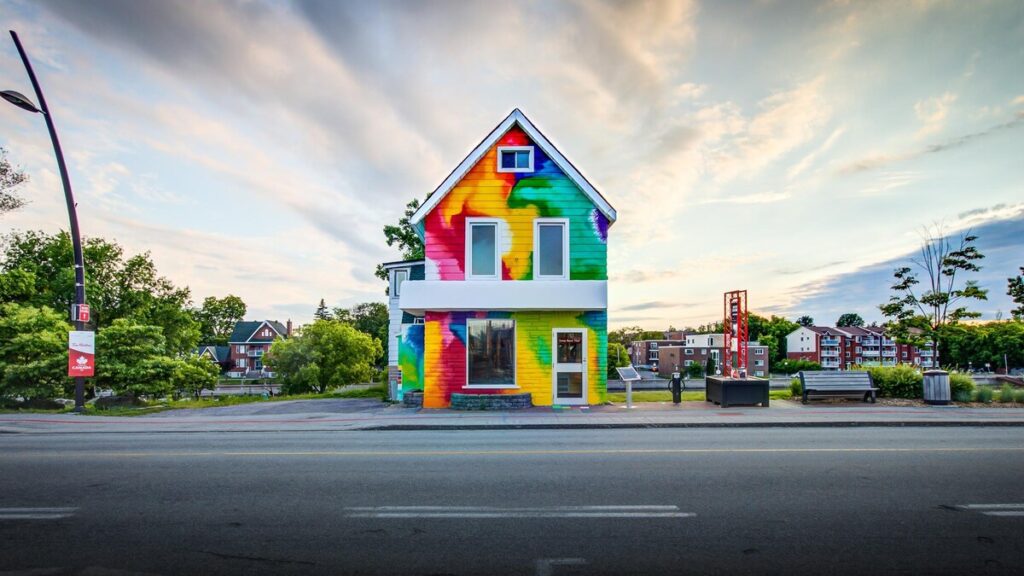
L’Entre-Deux, a building that housed temporary artist studios that recently shut down. Photo: Charles Regimbal.
Do you believe it necessary to move to a metropolis like Montreal to be a working artist?
If I believed that to be the case, I would not be here! Obviously living in a metropolis offers many advantages, including a larger variety of galleries, easier access to spaces to create, and the proximity of other artists and support networks. I know of many artists who live and work in Gatineau but exhibit elsewhere. We also have the advantage of being beside Ottawa, very close to Montreal and not that far from Toronto (where close to a quarter of all artists live!) meaning we are far from isolated. It might have been the case in the past, but the advent of the internet has really changed that reality. In the last year alone, I have had the opportunity to work for the Ontario Arts Council, based in Toronto, and have given conferences to groups of artists located across Quebec, without ever having to leave my home.
How does your work as teacher inform your artistic practice?
I often say, with a bit of a laugh, that now that I am now myself a teacher, I finally understand what my own teachers were trying to tell me as a student. Being a teacher, if I want to accurately convey technical, historical, or conceptual notions, I must not only constantly revise and update my own knowledge, but I must also keep abreast of what is currently going on in the field of contemporary arts to make sure what I teach is pertinent. I believe that my role as teacher allows me to keep learning. I’ve been at the Cégep de l’Outaouais for eight years and so many of my former students now hold bachelors or masters and are active contributors to the local artistic scene, which I love to see. Being a teacher allows me to continually invest in my artistic community and vice versa.
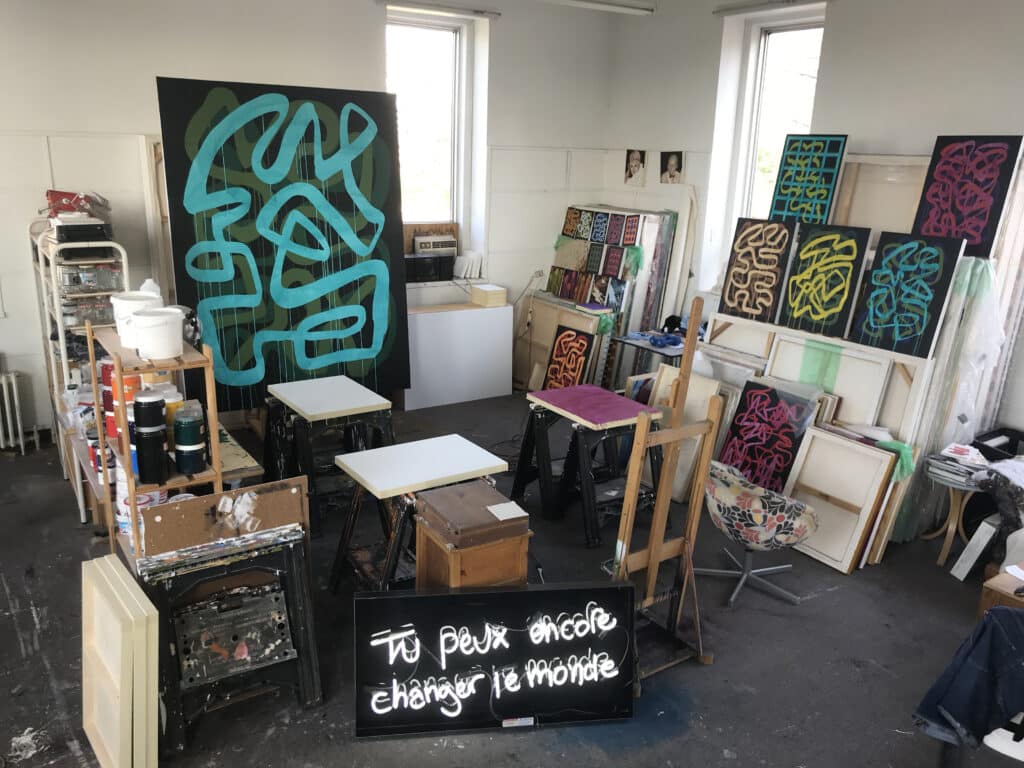
A look into the artist’s studio. Photo: courtesy of the artist.
You’ve developed a striking visual signature, how has it evolved throughout the years?
Indeed, while my practice has changed throughout the years, like going from modern-figurative to a more abstractive style, I’ve continuously explored some of the same formal aspects resulting in a visual signature that has become quite recognizable. I’m interested in the dichotomy between form and substance, colour theory and the manipulation of matter. Certain aspects of my process have a recurring theme: the motifs, lines and spots are drawn meticulously but then divided by tape and painted over with a roller. However, my subject matter is often very diverse. As an example, my series J’ai vu l’homme invisible, mais lui ne m’a pas vu explores an imagined meeting with Patrice Desbiens, who delves into the Franco-Ontarian identity in his important book L’homme invisible/the invisible man. In my series Nelligan, my work is based on the motifs found in 19th century wallpaper, era of the famous poet, when many artists only painted the faces and hands and assistants painted the rest. My series Libre circulation was all based on literary works because the exhibition took place at the same time as the Salon du livre. The series Manipulation attempted to draw parallels between the use of hands in religious paintings during the renaissance and current politics. My piece Tu peux encore changer le monde was painted as a response to a conversation with the assistant to American artists Joseph Kosuth: created in neon, his favourite medium, the piece was hung on a reproduction of the wallpaper that adorned the walls of the apartment where the conversation took place. More recently, the lines of my abstractive paintings in the series Errances are an accumulation of GPS trails of the walks I took during the pandemic.
What are some of the necessary conditions that would help artists stay in the Outaouais?
Firstly, artists need somewhere to work. Currently, there are very few of them. The temporary studios created as part of the Ateliers du Ruisseau have offered space for thirteen artists to work in downtown Gatineau. If we want artists to stay, we must offer them spaces that can match their ambitions. That is the most crucial aspect in my opinion, because a high concentration of artists becomes a lynchpin for many other initiatives. We also need more spaces to exhibit the work of these artists, of which there are currently few, including more commercial galleries dedicated to selling their work. According to the most recent numbers evoked in La Presse, Gatineau is the most expensive city to live in Quebec. Thankfully the city currently offers a grant program to help artists pay for the studio space, which is essential for most working artists. I know personally I couldn’t rent my space if the program didn’t exist.
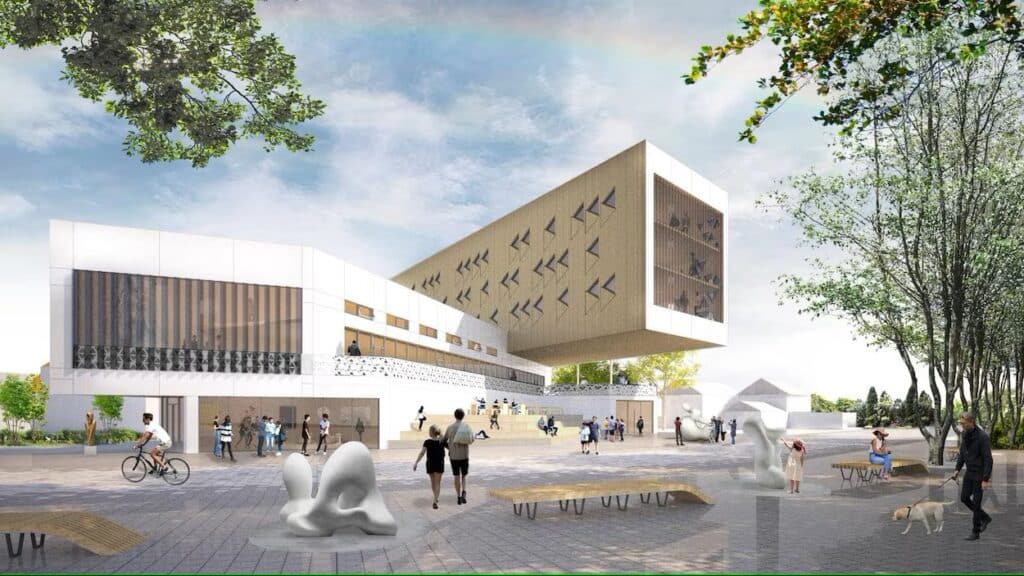
Rendering of the future building that will house the Ateliers du Ruisseau.
Speaking of the City of Gatineau, it recently announced its official support towards the Ateliers du Ruisseau project, what is the importance of such a project on the Outaouais artistic community?
It’s the most important cultural construction project for the city since we built the Maison de la culture de Gatineau over 30 years ago. It represents a major investment towards the visual arts and one of the most unique projects in Quebec and even Canada. Building such a large number of bespoke studios by and for visual artists is without precedence. The building will also be home to the Galerie Montcalm and the City of Gatineau’s permanent collection, one of the most important municipal art collections in Quebec, which bears mentioning. The fact that the cooperative will also own the building will guarantee the longevity of the project and protect the artists that will have their studios there, who are often expropriated when real estate promoters get their hands on buildings that house artist studios in other cities. The Ateliers du Ruisseau aims to create the necessary conditions to preserve our artists in the Outaouais while becoming a gathering space where visual artists, media artists and craftspeople can exchange ideas.
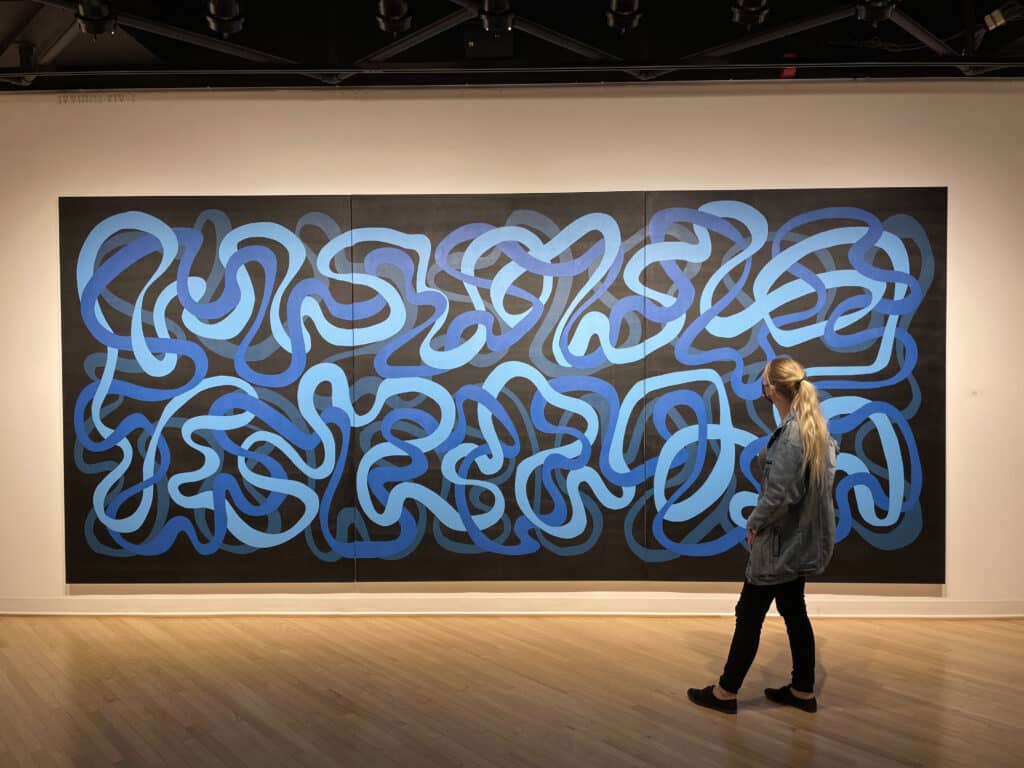
A view of the artist’s exhibition at the Galerie Montcalm. Photo: courtesy of the artist.
What is a must-see cultural event in the Outaouais this summer?
The exhibit XL presented at AXENÉO7, which ends on July 29th, is worth a visit. It’s a collective exhibit that celebrates the 40th anniversary of the artist-run centre while shining a light on the current visual arts scene in the Outaouais. Since opening in June, many activities have been organized around the exhibit, including performances, discussions, and parties, and I salute AXENÉO7 for their initiative.
One of Benjamin Rodger’s paintings is currently on view at AXENÉO7 as part of the collective exhibition XL, open until July 29th, 2023.
written by Le Pressoir
Gatineau singer-songwriter Sofia Duhaime is a rising star of the Quebec music scene who seems to be a linchpin for good news lately. Last March she signed to Montreal-based record label La Maison Mère, home to (pardon the pun) other artists such as Sarahmée and Léonie Gray, fast-tracking her career to levels beyond her 20 years of age. Following a nomination as Best New Artist at the 2023 Capital Music Awards, she’s recently been announced as a semi-finalist at the Grand Concours Hydro-Québec du Festival international de la chanson de Granby, where she’ll be battling out on stage against 23 other emerging artists next August. Finally, she’ll be opening up the show for the Fête nationale du Québec in Gatineau alongside 2022’s ADISQ Revelation of the Year Ariane Roy and Quebec musical icon Paul Piché.
All this not even a year after launching her debut EP L’enfant, released in October last year, as well as her commanding performance during the 29th edition of the famed music contest Ma première place des Arts in Montreal. Sharing her time between Montreal, where she’s currently completing her studies in cinema at Concordia University, and her hometown of Gatineau, the artists seems to be navigating her career and newfound fame with the ease of an industry veteran. We recently chatted with her in order to discuss the importance of her home region, the impact of her studies on her musical career, and how the cultural ecosystem of the Outaouais can continue to evolve.
What importance would you say the Outaouais has on your creative process?
Growing up in Gatineau has definitely impacted the direction in which I take my music. Being surrounded by the natural elements, like the Ottawa River and the Gatineau Park, has deeply inspired me. It’s where I spend a lot of time, especially when I need to disconnect and take a break from the stresses of daily life. You can even hear some slight references, like in “Nature’s Daughter”, whose inspiration struck me while swimming in the river in Wakefield. Also, given that the Outaouais is very bilingual, my inspiration comes to me in both languages. Our proximity to Ottawa helps as well, offering up a whole new audience. I’ve been lucky to be as well received in Quebec as in Ontario.
As you mentioned, you write in both English and French. How do you decide which language to choose?
Honestly it’s often not my choice! While I’m proud of being a francophone artist, inspiration isn’t something you can control and as such sometimes my lyrics come to me in French and sometimes in English. My English has greatly improved and because I live my life in both languages, it also means it’s natural my songs should be in both languages as well. I believe it has enriched my writing and widened my scope of inspiration. Basically I never really decide a head of time and just accept the language in which the lyrics come to me. I have yet to write a bilingual song though, but I’m open to it!
How have your cinema studies impacted your musical output?
I’ve always touched many different artistic mediums, often simultaneously. For me, music and film make for a perfect duo. When I write a song, I’m often imagining a visual narrative and so I usually already have ideas for music videos or photoshoots. Studying cinema has opened me up to so many different stories, emotions and visual imagery that often feeds my lyrical inspiration. I see them as a whole, two mediums that come together to tell a story. I would love to create music videos that will come support and complete the storytelling of my lyrics.
How significant is it for you to be playing the Fête nationale in Gatineau, and what are some of your fondest memories of this celebration?
Very!!! It’s an immense honour and an amazing opportunity for me to play in my hometown for such an important event. I honestly couldn’t believe it when I received the offer to play with Ariane Roy and Paul Piché, two artists I deeply admire. As a spectator, I’ve always loved going to see the St-Jean Baptiste shows. The atmosphere is electric! I remember playing a tiny stage in Aylmer for the St-Jean Baptiste celebrations 5 years ago, Sofia that was in secondary 4 would be freaking out right now if I told her where we’ve landed. It’s great to be recognised by your home region and I’m excited to represent for the francophonie and for Quebec artists.
You’ve recently been announced as a semi-finalist at the Grand Concours Hydro-Québec at the Festival international de la chanson de Granby (FICG), how does it feel?
I’m absolutely chuffed to be doing the FICG this year. I’d auditioned for the first time last year and didn’t make it, but I’d received amazing feedback. Since then I did a dozen shows, released by EP and gained a lot of confidence and experience. So I was both very happy and a little surprised when I learned I’d made it this year. It was like a confirmation that all my efforts had been worth it. We spend an amazing first week in Granby to meet with all other other semi-finalists and it was a beautiful experience. Everyone is so talented, generous and kind. I can’t wait to share this experience with them, to participate in precious workshops that will help with my career and obviously, to perform on the stunning stage at the Granby Palace alongside such incredible talents.
Are there any advantages to sharing your time between Montreal and the Outaouais?
I can definitely be a lot, especially this last year, but I couldn’t ask for a better scenario. In Montreal I get to be surrounded by a bunch of musical friends and take advantage of the opportunities that only come when you’re in the heart of the action. However, I’m often in Gatineau to see friends, family and the artistic community that are still there for me. In Gatineau, I get to perform in venues that I’m deeply attached to and where I got to see many of my idols perform. The mix between home and the city keep me motivated. I get to explore the complexity of the industry with the knowledge that I’m always welcomed back home.
How would you describe the impact on your career by signing with La Maison Mère?
I’m honestly too excited about what we’re working together at La Maison Mère. I hadn’t planned on signing with a record label so soon. But their advice and their experience really gelled with my own goals. It means far fewer false-stars and a lot less guesswork. Also, having to organise my emails, booking my own shows and dealing with all the bureaucracy was starting to really impact the time I had to work on my craft and concentrate on what I love. Thanks to their support, I can now concentrate on creating and reaching my goals. We’re working on my debut album, more shows and a bunch of other exciting projects I could have never accomplished this quickly without a team.
Are there any elements to the musical ecosystem in the Outaouais that you feel are missing our could be improved upon?
The Outaouais is really a region that’s full of support and hope for new artists. I really felt that quickly thanks to events like Secondaire en Spectacle and Cégeps en Spectacle. I’ve always felt very encouraged. However, I think it could grow even more! I’ve seen many initiatives that I hope will continue, such as the street festivals in Aylmer and in Hull. We have a wealth of artists and audiences in the Outaouais! We just need to keep investing in our communities, working together, supporting artists and making sure they’re well paid so that they don’t feel the need to leave.
What can audiences expect from you at the Fête nationale du Québec à Gatineau?
I can’t wait to perform! I’ll be performing exclusively in French, with many of my known songs but also a few new ones. I’ll obviously be accompanied by my trusty guitar and dear autoharp and hope to create a warm and inviting atmosphere. I may even pay hommage to one of our favourite Quebec artists…
Sofia Duhaime will be performing at the free concert celebrating the Fête nationale du Québec à Gatineau Friday June 23rd in the downtown core on Laval Street with Paul Piché and Ariane Roy. Read all the details in our events calendar.
While the Outaouais region is known for its natural and tourist attractions, we mustn’t underestimate its thriving arts and culture scene. As an important historical region for indigenous populations as well as a popular homebase for various communities, the Outaouais is overflowing with cultural, historical, and artistic activities for all tastes and all ages. Culture is at the heart of our regional identity and allows residents to share in important life moments, to entertain themselves and to explore new horizons, all while discovering our local talents.
These are but some of the reasons that Culture Outaouais created Tout culture, your new Outaouais cultural hub. Residents and tourists alike will be able to take stock of the Outaouais’s cultural richness thanks to this new collaborative platform.
A cultural calendar highlighting the Outaouais
You’d like to plan a night out but don’t know where to go? A cursory glance at the Tout culture events calendar will highlight the diversity and wealth of cultural activities at your fingertips. Whatever your preferences you’re sure to find something to quench your cultural thirst. Plays, movie screenings, concerts, art exhibitions, dance performances, you’ll find a bit of everything across the entire Outaouais region, from the Pontiac to the Petite-Nation, from the Vallée-de-la-Gatineau all the way to downtown Old Hull in Gatineau. The event calendar will offer you an overview of all the cultural offerings in the Outaouais region that you will be able to filter by category or audience. You will also be able to view the results on our new dynamic map to find the events closest to you. Our new cultural places repertory will allow you to take stock of the cultural ecosystem of the Outaouais region.
Are you a cultural organisation or promoter? Culture Outaouais members now have access to submit your events to this new collaborative platform. Once you’ve validated your membership, fill out a request via this form.
A cultural magazine to highlight the Outaouais
Given its rich cultural offering, you’d be forgiven for getting a bit lost. Thankfully Tout culture has launched a new cultural magazine highlighting the key cultural players in the Outaouais as well as its artists. Also, thanks to a partnership with local media outlet Le Pressoir, you’ll be able to discover their must-sees once a month, as well as local artist profiles. You’ll also find articles about the cultural workers and organizations that help shape the Outaouais cultural scene.
You’d like to contribute to the cultural magazine? Send us a message to become a Tout culture writer!
A new workshop section to help develop your artistic practice
One doesn’t become a great artist without practice, and thankfully the Outaouais is home to hundreds of amazing professional artists that are willing to share their knowledge. Thanks to the new workshop section of Tout culture, artists and organizations will now be able to share their courses and programs, whether they be for professionals or amateurs. You will find workshops for all skillsets, interests, and age groups.
You offer workshops or courses and would like to publish them on Tout culture? Find out how to become a member of Culture Outaouais and join the Tout culture platform. Already a member? Simply fill out this form to begin creating your account.
New surprises on the horizon
This is but the beginning! Visit Tout culture regularly to keep abreast of the Outaouais cultural scene as well as the platform’s new developments. Follow us on social media for real time updates thanks to our Facebook and Instagram accounts.
We’re also working on a diversity of campaigns that will help the Tout culture platform evolve and becoming a dynamic platform thanks to our partnerships with the Ministry of culture and communications, the Québec council for the arts, the City of Gatineau, Outaouais Tourism and Le Pressoir. We thank them for their ongoing support. We can’t wait to share what we’re cooking together. We also have new initiatives that we’ll be launching soon so be sure to add Tout culture to your favourites and follow us on our socials to be the first to know.
Help culture thrive in the Outaouais
Now it’s up to you to make sure this platform a living and breathing cultural entity! Be sure to share the platform with friends and family or help us by becoming a contributor to the cultural magazine. Write to us today to find out how you too can become a cultural ambassador for the Outaouais!
